参考:代码随想录
首先总结一下自己对链表的概念容易混淆的地方:
单向链表的定义:链表是由结点构成,head指针指向第一个成为表头结点,而终止于最后一个指向NULL的指针。
1.头指针head
头指针head,指向头节点。当链表不为空时,head.val即为头节点的值;而当链表为空时,head.val会报错,因为head此时指向null,没有.val属性。
无论链表是否为空,头指针均不为空。具体来说,即头指针本身不能为空,它一定存在,不论指向的是空,还是指向的是头结点。如果头指针为空,那么它无法指向任何地方。
2.结尾处的None
此处需要注意,结尾处的None不是一个节点,也即不是ListNode(None),而是None。在做比如翻转链表类题的时候容易混淆。
3.链表题常见的错误:
1)超出时间限制。说明链表大概率哪里连接错误了,有可能连成了圈
2)Nonetype没有val和next属性,极有可能是循环或者递归的时候对于链表的边界没有处理好,对最后的None也用了val和next属性
例一:203. 移除链表元素
203. 移除链表元素
要注意头节点的移除和其他节点的移除不一样,头节点移除:head=head.next
其他节点移除:head.next=head.next.next
思路一:写一段代码来单独移除头节点
分成两种情况考虑。第一种情况是头节点非空,且头节点的值就是val。假设后续返回head,此时需要直接对后续返回的head进行处理,把head=head.next,即删除头节点
如果不是第一种情况,对head赋值给head_copy,若head_copy指向的下一节点值为val,
通过head_copy.next=head_copy.next.next删除下一节点,否则head_copy=head_copy.next,head_copy指针移到下一位置。
# Definition for singly-linked list.
# class ListNode(object):
# def __init__(self, val=0, next=None):
# self.val = val
# self.next = next
class Solution(object):
def removeElements(self, head, val):
"""
:type head: ListNode
:type val: int
:rtype: ListNode
"""
head_copy=head
if not head:
return None
while head!=None and head.val==val:
head=head.next
while head_copy.next:
if head_copy.next.val==val:
head_copy.next=head_copy.next.next
else:
head_copy=head_copy.next
return head
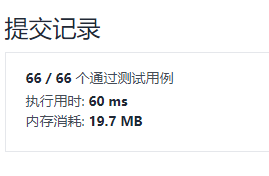
存在重复处理的缺点,时间复杂度高。
比如处理链表[7,7,7,7],
经过
while head!=None and head.val==val:
head=head.next
head链表已经为空了,但是head_copy依旧是[7,7,7,7],所以还要经过以下代码
while head_copy.next:
if head_copy.next.val==val:
head_copy.next=head_copy.next.next
else:
head_copy=head_copy.next
得到head_copy为[7],然后最后返回head为空,可以优化:处理完头节点值等于val后再赋给head_copy,快个几毫秒,代码如下:
class Solution(object):
def removeElements(self, head, val):
"""
:type head: ListNode
:type val: int
:rtype: ListNode
"""
if not head:
return None
while head!=None and head.val==val:
head=head.next
if not head:
return None
else:
head_copy=head
while head_copy.next:
if head_copy.next.val==val:
head_copy.next=head_copy.next.next
else:
head_copy=head_copy.next
return head
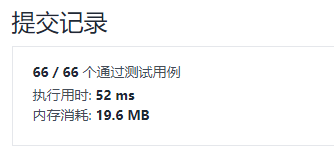
思路二:添加一个虚拟头结点为新的头结点
为了保持格式一致,即对头结点也使用head.next=head.next.next格式的删除方法,可以添加一个虚拟的头结点作为新的头结点。但是要注意返回的时候return dummy_head.next
# Definition for singly-linked list.
# class ListNode(object):
# def __init__(self, val=0, next=None):
# self.val = val
# self.next = next
class Solution(object):
def removeElements(self, head, val):
"""
:type head: ListNode
:type val: int
:rtype: ListNode
"""
dummy_head=ListNode(next=head)
cur=dummy_head
while cur.next:
if cur.next.val==val:
cur.next=cur.next.next
else:
cur=cur.next
return dummy_head.next
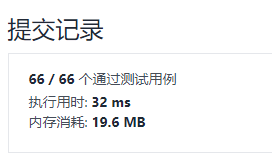
例二:翻转链表
方法一:双指针法
其实这里可以理解为需要三个指针,一个初始化为None的pre作为新链表的尾部,一个head作为目前所在节点,一个nextnode记录下一个节点的位置。
1)当head不为None时,head.next一定存在,把head.next用nextnode指针记录。
2)head.next指针指向pre
3) pre=head,head=nextnode(也即pre和head指针都往下走一步)
这里一定要注意的是nextnode记录下一个节点的位置的步骤必不可少,因为一旦head.next=pre,如果没有nextnode记录下head要去的下一个位置,那链表的head指针没法继续往下走
# Definition for singly-linked list.
# class ListNode(object):
# def __init__(self, val=0, next=None):
# self.val = val
# self.next = next
class Solution(object):
def reverseList(self, head):
"""
:type head: ListNode
:rtype: ListNode
"""
prev=None
while head:
nextnode=head.next
head.next=prev
prev=head #prev记载head呆过的地方
head=nextnode
return prev
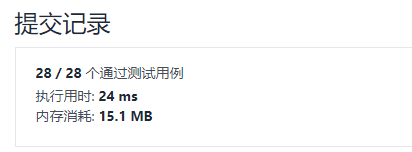
方法二:递归法
思路跟双指针法一样,就是while循环的终止条件设置成递归结束的条件,然后每次while循环的执行都用递归循环来代替。
可以对比学习一下自己写的递归和别人写的递归,很明显自己的代码可以写的更简洁一点。直接return nextstep(cur,nextnode),而不用res=nextstep(cur,nextnode) 再return res
自己的版本:
class Solution(object):
def reverseList(self, head):
"""
:type head: ListNode
:rtype: ListNode
"""
def nextstep(pre,cur):
if not cur:
return pre
nextnode=cur.next
cur.next=pre
res=nextstep(cur,nextnode)
return res
pre=None
cur=head
result=nextstep(pre,cur)
return result
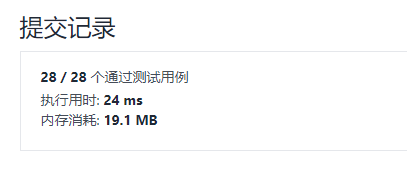
别人的版本:
class Solution:
def reverseList(self, head):
def reverse(pre,cur):
if not cur:
return pre
tmp = cur.next
cur.next = pre
return reverse(cur,tmp)
return reverse(None,head)
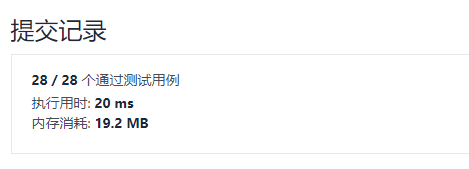
例三:24. 两两交换链表中的节点
24. 两两交换链表中的节点
这里最好要加一个虚拟头节点dummyHead来简化代码。有两点方便
第一是可以把交换节点的过程统一化,如下图(图源:代码随想录)

(写代码时,上图中的步骤二和步骤三应该对调,不然经过步骤二,值为2的节点的下一节点已经是值为1的节点,这样无法到达值为3的节点)

然后步骤一1–>4;步骤二: 4–>3 步骤三:3–>4,过程更规范化。
第二点是返回链表头部的方便,可以直接return dummyHead.next。如果不用虚拟头节点,由于此时head不再是初始节点,整个链表怎么返回也是个问题。
具体思路:如上图所示,先设置一个虚拟头节点,之后可以分别通过上图中的步骤一、步骤三、步骤二来达到交换节点的目的。
# Definition for singly-linked list.
# class ListNode(object):
# def __init__(self, val=0, next=None):
# self.val = val
# self.next = next
class Solution(object):
def swapPairs(self, head):
"""
:type head: ListNode
:rtype: ListNode
"""
dummyHead = ListNode(0)
dummyHead.next = head
temp = dummyHead
while temp.next and temp.next.next:
node1 = temp.next
node2 = temp.next.next
temp.next = node2 #步骤一
node1.next = node2.next #步骤三
node2.next = node1 #步骤二
temp = node1 #到下一位置
return dummyHead.next
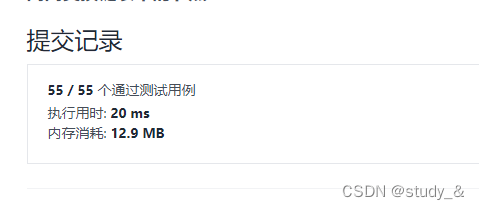
例四:19. 删除链表的倒数第 N 个结点
方法一:两次遍历
第一遍遍历数链表中节点个数,第二遍数目前所在节点数,如果到了倒数第n个节点,删除它
# Definition for singly-linked list.
# class ListNode(object):
# def __init__(self, val=0, next=None):
# self.val = val
# self.next = next
class Solution(object):
def removeNthFromEnd(self, head, n):
"""
:type head: ListNode
:type n: int
:rtype: ListNode
"""
#方法一:两趟扫描,第一趟数链表数,确定需要删除的结点,第二趟删除结点
#两种特殊情况:链表只有一个结点;链表结点数==n
cur_node=head
cnt=0
while cur_node:
cnt+=1
cur_node=cur_node.next
if cnt==1:
return None #链表只有一个结点
#链表结点数==n,删除首结点
if cnt==n:
head=head.next
return head
#要删除的结点序号 cnt-n
opr_node=head
temp=0
while opr_node:
if temp==cnt-n-1:
opr_node.next=opr_node.next.next
opr_node=opr_node.next
temp+=1
else:
temp+=1
opr_node=opr_node.next
return head
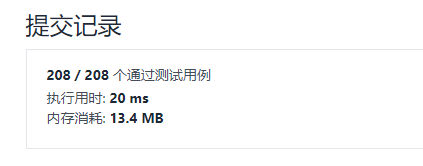
方法二:双指针一次遍历
只允许一次遍历。用两个指针,指针间距离设置成n,第一个指针初始化为头节点。两个指针同时运动,这样第二个指针到链表尾部时,第一个指针指向的就是要删除的节点
# Definition for singly-linked list.
# class ListNode(object):
# def __init__(self, val=0, next=None):
# self.val = val
# self.next = next
class Solution(object):
def removeNthFromEnd(self, head, n):
"""
:type head: ListNode
:type n: int
:rtype: ListNode
"""
#方法一:第一遍遍历数链表中节点个数,第二遍数目前所在节点数,如果到了倒数第n个节点,删除它
#方法二:只允许一次遍历。用两个指针,指针间距离设置成n,第一个指针初始化为头节点。两个指针同时运动,这样第二个指针到链表尾部时,第一个指针指向的就是要删除的节点
dummyhead=ListNode(0)
dummyhead.next=head
prevfirstnode=dummyhead
firstnode=head
secondnode=firstnode
while n:
n-=1
secondnode=secondnode.next
# print("step1 yes")
while secondnode:
prevfirstnode=prevfirstnode.next
firstnode=firstnode.next
secondnode=secondnode.next
# print("step2 yes")
prevfirstnode.next=firstnode.next
return dummyhead.next
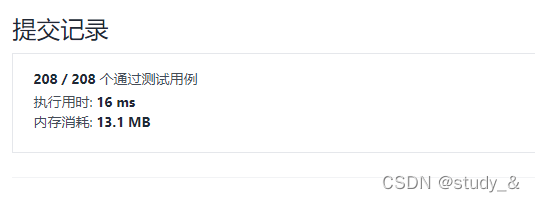
例五:面试题 02.07. 链表相交
面试题 02.07. 链表相交
链表的相交用比较经典的双指针,“走你走过的路”。但是有一个自己容易出错的地方在于:
当headA或者headB走到下一节点为None的时候,就把它调回另外一链表的头部,这样可以通过大部分的测试用例,但是不能通过当其中一个链表只有一个节点,但是和另一链表相交的情况。
正确的用法应该是:当headA或者headB走到尾部None的时候,再把它调回另外一链表的头部
错误版代码
# Definition for singly-linked list.
# class ListNode(object):
# def __init__(self, x):
# self.val = x
# self.next = None
class Solution(object):
def getIntersectionNode(self, headA, headB):
"""
:type head1, head1: ListNode
:rtype: ListNode
"""
#双指针,“走你走过的路”
if not headA or not headB:
return None
#当其中一个链表只有一个节点,但是和另一链表相交的情况
headAcopy=headA
headBcopy=headB
# if headA==headB:
# return headA
while headA.next or headB.next:
if headA==headB:
return headA
if not headA.next:
headA=headBcopy
headB=headB.next
continue
if not headB.next:
headB=headAcopy
headA=headA.next
continue
headA=headA.next
headB=headB.next
return None #都为空
正确版代码
# Definition for singly-linked list.
# class ListNode(object):
# def __init__(self, x):
# self.val = x
# self.next = None
class Solution(object):
def getIntersectionNode(self, headA, headB):
"""
:type head1, head1: ListNode
:rtype: ListNode
"""
#双指针,“走你走过的路”
if not headA or not headB:
return None
#当其中一个链表只有一个节点,但是和另一链表相交的情况
headAcopy=headA
headBcopy=headB
# if headA==headB:
# return headA
while headA or headB:
if headA==headB:
return headA
if not headA:
headA=headBcopy
headB=headB.next
continue
if not headB:
headB=headAcopy
headA=headA.next
continue
headA=headA.next
headB=headB.next
return None #都为空
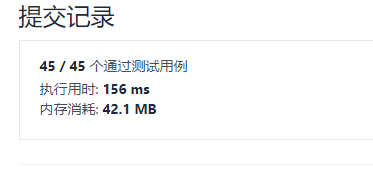
例六:141. 环形链表\142. 环形链表 II
141. 环形链表
142. 环形链表 II
判断环形链表类的题目一般都是用快慢指针算法,即fast指针和slow指针都从头节点出发,fast指针一下迈两步,slow指针一下迈一步,如果链表中存在环,那么fast和slow节点一定会相遇。
141. 环形链表只要求返回是否存在环,但是142. 环形链表 II还要求返回环的入口索引。容易产生的问题如下:
1.为什么有环的链表中,快慢指针一定会相遇?
首先,不管是怎样的链表(除了单个节点自动成环的情况),快指针一定比慢指针先入环。而入环后,假设快慢指针不相遇,那么快慢指针都可以看成在无限长圆环状的链表上一直走,而这个走的过程,由于快指针迈两步,慢指针迈一步,快指针每次迈步都在向慢指针逼近一步,快指针早晚会追上慢指针,最终相遇,且一定是在慢指针在环内的第一圈相遇(为什么?)。
2.怎么确定环的入点索引?
需要推导过程,这里讲的很清楚。过程简单点总结就是从头结点出发一个指针,从相遇节点 也出发一个指针,这两个指针每次只走一个节点, 那么当这两个指针相遇的时候就是 环形入口的节点。
141. 环形链表
不够优雅版代码
# Definition for singly-linked list.
# class ListNode(object):
# def __init__(self, x):
# self.val = x
# self.next = None
class Solution(object):
def hasCycle(self, head):
"""
:type head: ListNode
:rtype: bool
"""
#单节点自动成环
#只有两个节点,成或不成环
if not head:
return False
fast=head
slow=head
#单节点无环
if not fast.next:
return False
#单节点有环
if slow.next==fast.next.next:
return True
#两节点无环:
if not fast.next.next:
return False
#两节点有环,及其他
while fast.next.next:
fast=fast.next.next
slow=slow.next
if slow==fast:
return True
if not fast.next:
return False
return False
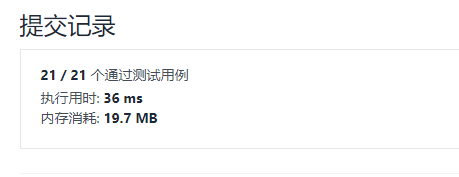
更优雅点的代码
跟上面代码逻辑一样,就是简化了一下,上面提到的情况也都包括了
# Definition for singly-linked list.
# class ListNode(object):
# def __init__(self, x):
# self.val = x
# self.next = None
class Solution(object):
def hasCycle(self, head):
"""
:type head: ListNode
:rtype: bool
"""
if not head:
return False
fast=head
slow=head
while fast and fast.next:
fast=fast.next.next
slow=slow.next
if slow==fast:
return True
return False
